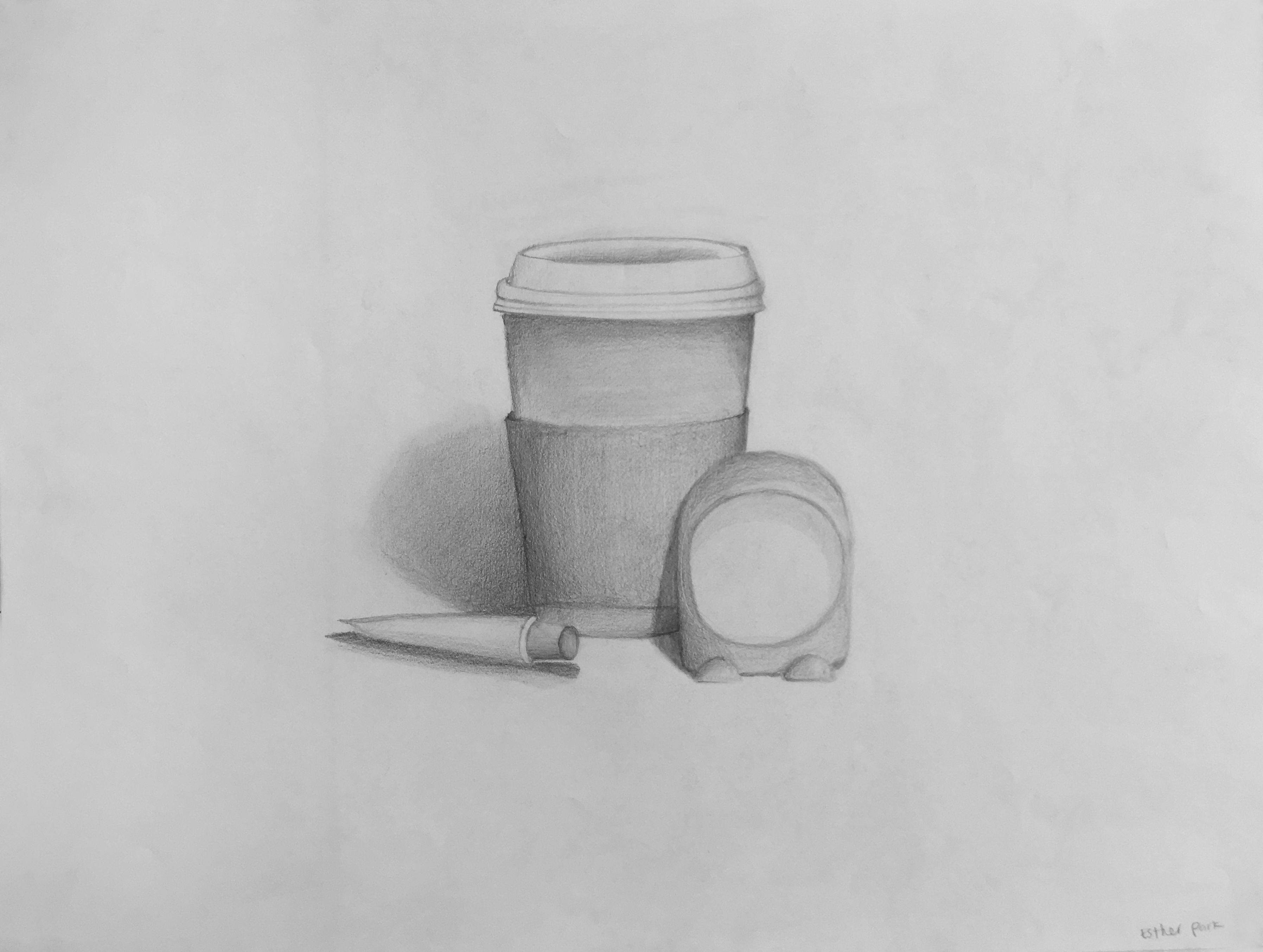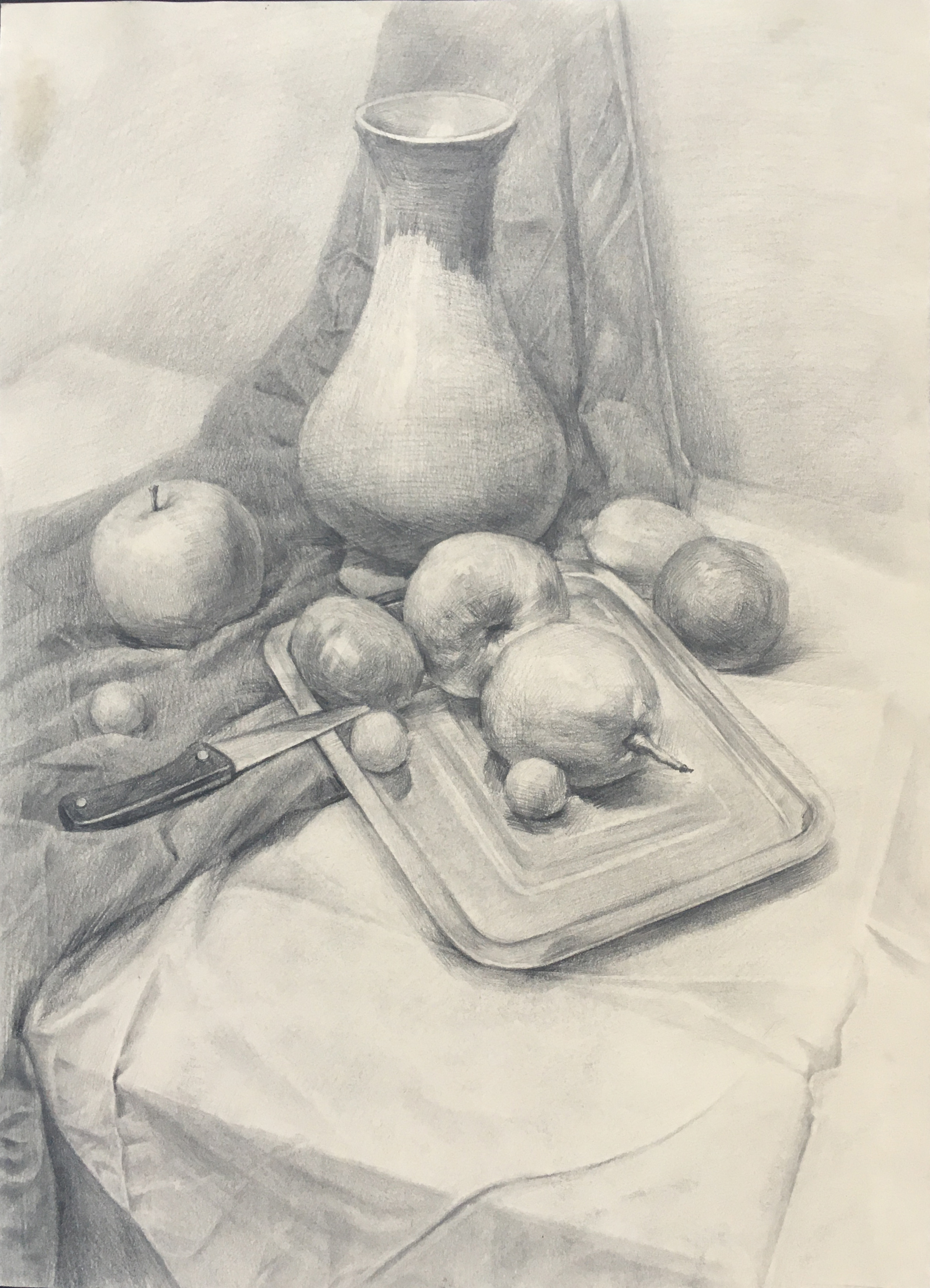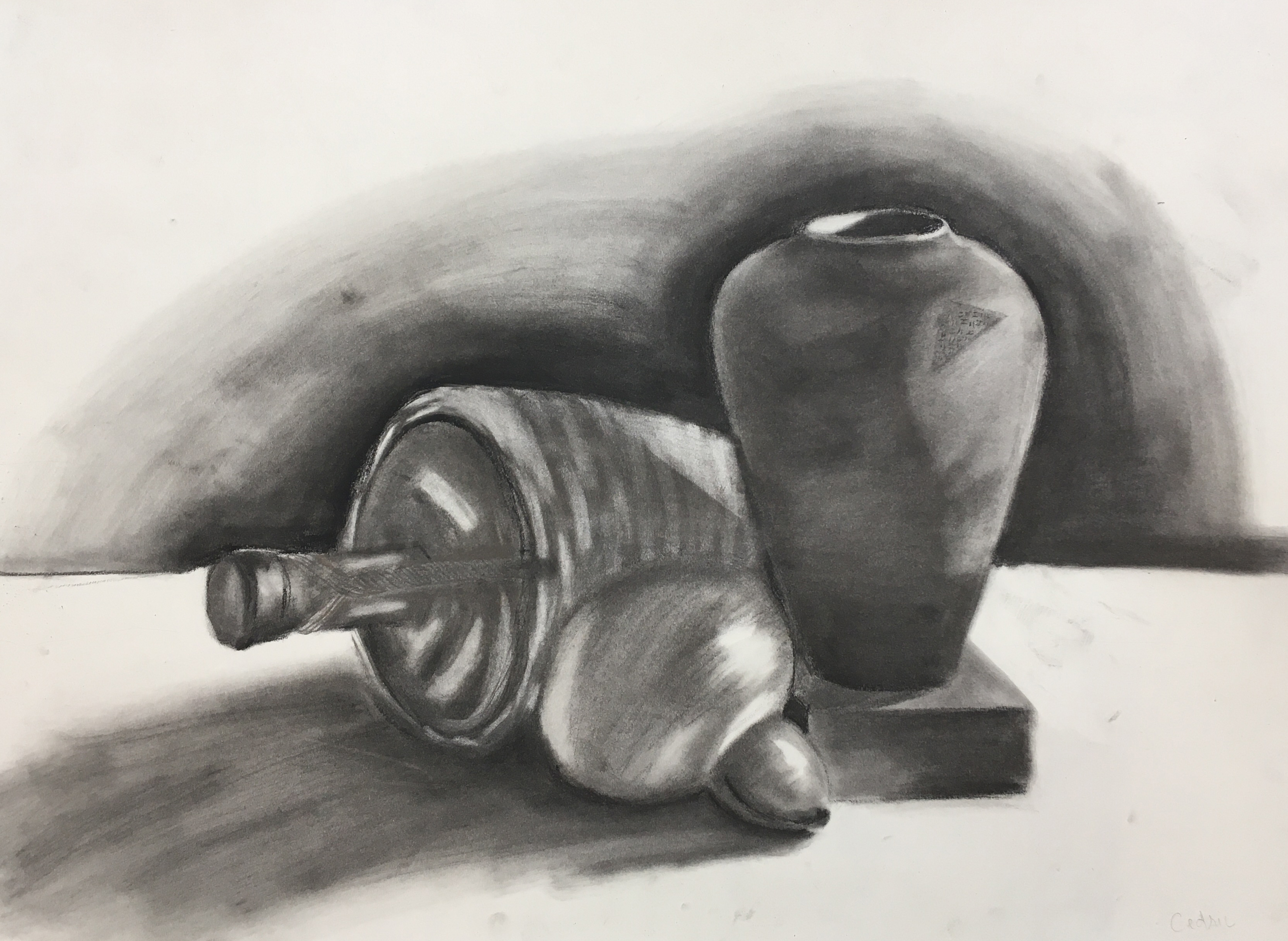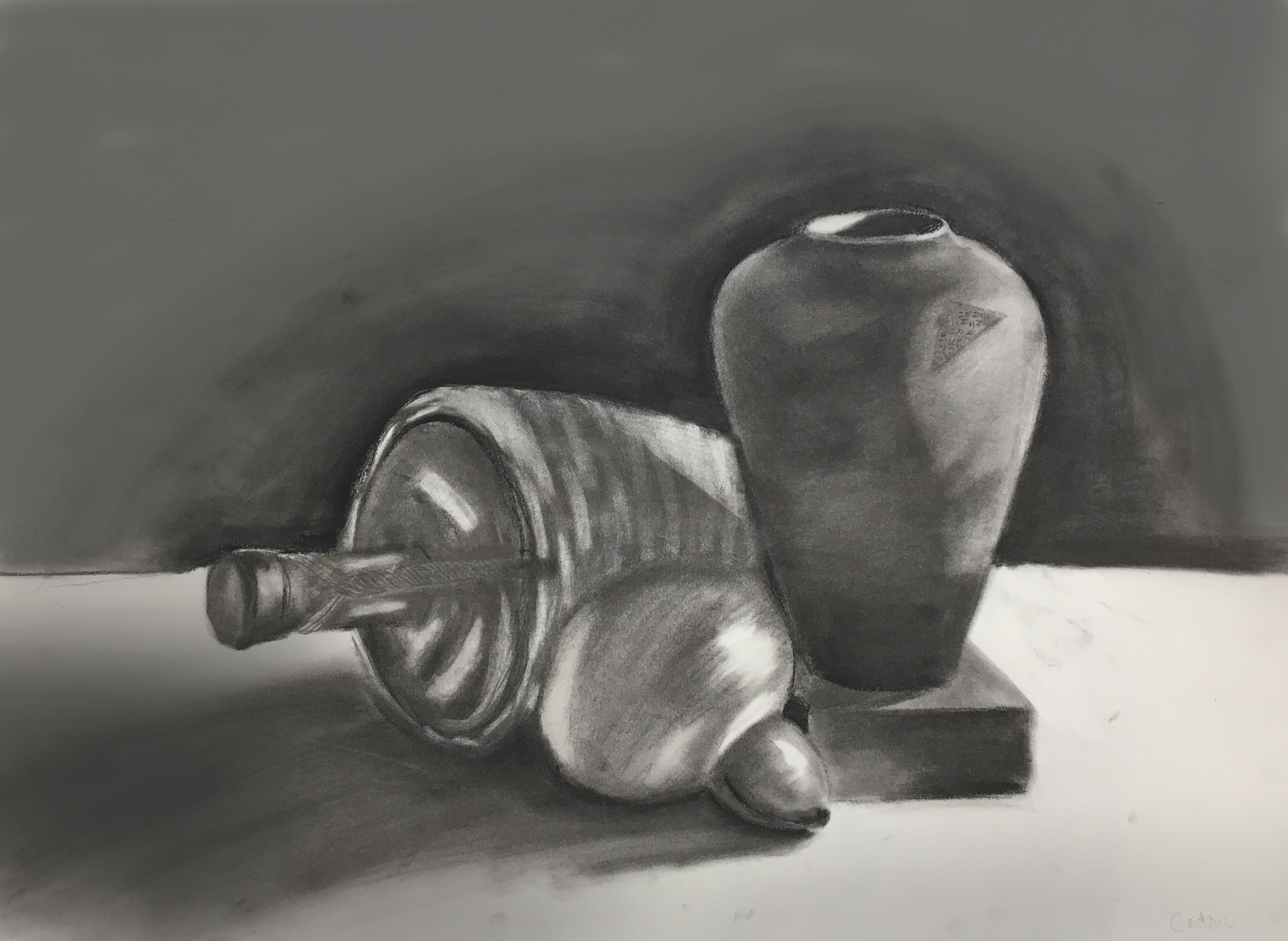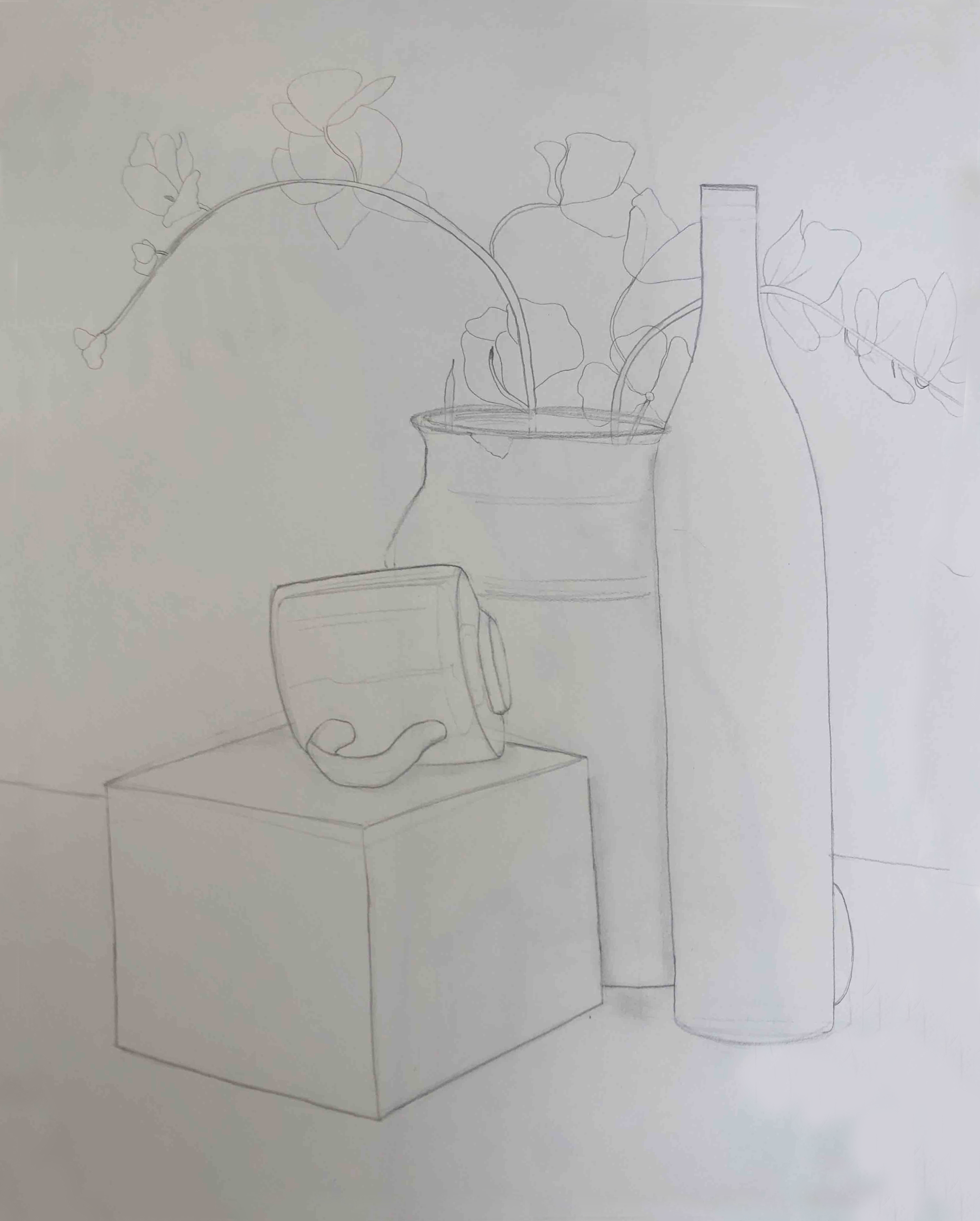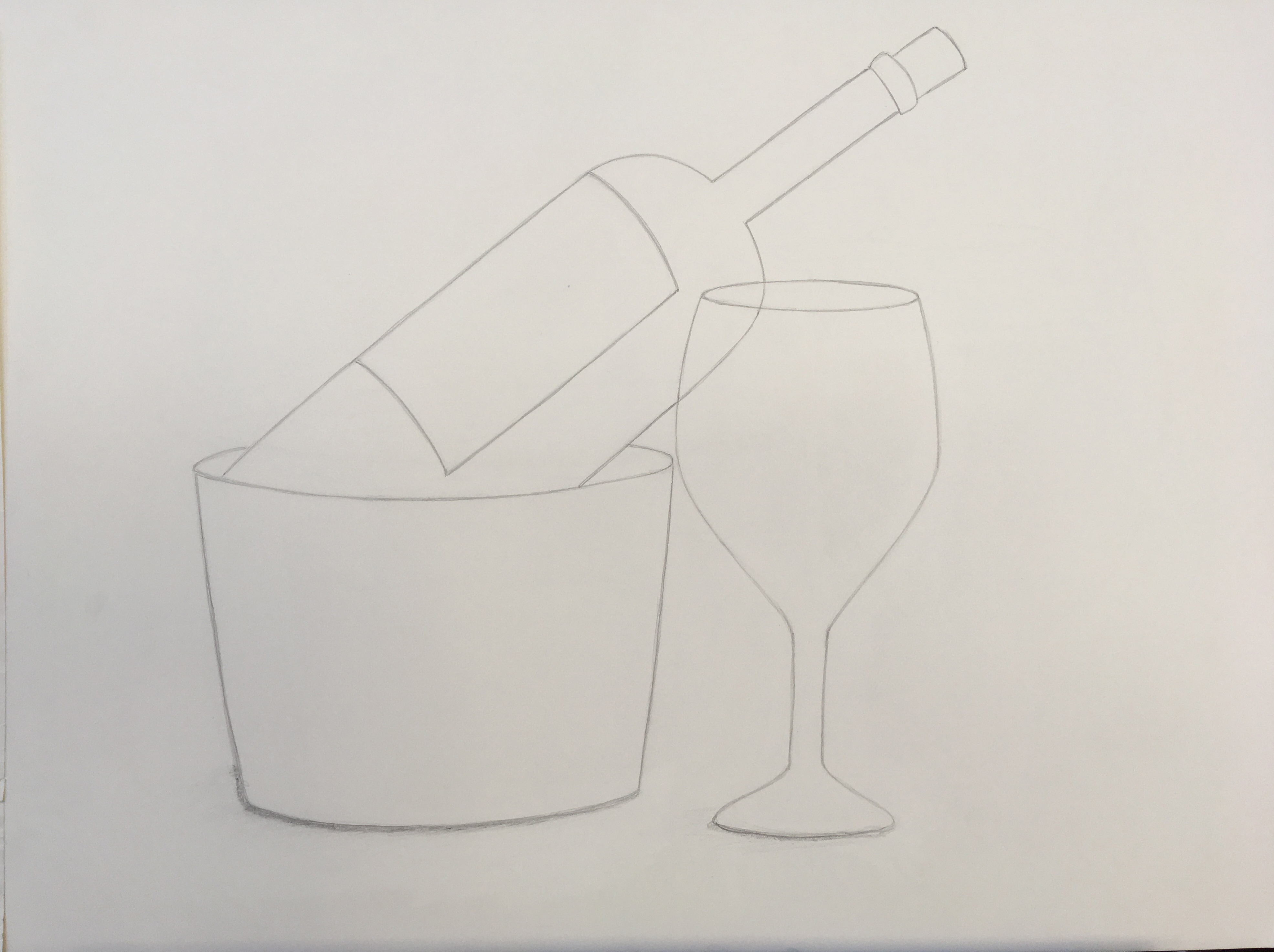1.9: Still Life
- Page ID
- 67699
\( \newcommand{\vecs}[1]{\overset { \scriptstyle \rightharpoonup} {\mathbf{#1}} } \)
\( \newcommand{\vecd}[1]{\overset{-\!-\!\rightharpoonup}{\vphantom{a}\smash {#1}}} \)
\( \newcommand{\dsum}{\displaystyle\sum\limits} \)
\( \newcommand{\dint}{\displaystyle\int\limits} \)
\( \newcommand{\dlim}{\displaystyle\lim\limits} \)
\( \newcommand{\id}{\mathrm{id}}\) \( \newcommand{\Span}{\mathrm{span}}\)
( \newcommand{\kernel}{\mathrm{null}\,}\) \( \newcommand{\range}{\mathrm{range}\,}\)
\( \newcommand{\RealPart}{\mathrm{Re}}\) \( \newcommand{\ImaginaryPart}{\mathrm{Im}}\)
\( \newcommand{\Argument}{\mathrm{Arg}}\) \( \newcommand{\norm}[1]{\| #1 \|}\)
\( \newcommand{\inner}[2]{\langle #1, #2 \rangle}\)
\( \newcommand{\Span}{\mathrm{span}}\)
\( \newcommand{\id}{\mathrm{id}}\)
\( \newcommand{\Span}{\mathrm{span}}\)
\( \newcommand{\kernel}{\mathrm{null}\,}\)
\( \newcommand{\range}{\mathrm{range}\,}\)
\( \newcommand{\RealPart}{\mathrm{Re}}\)
\( \newcommand{\ImaginaryPart}{\mathrm{Im}}\)
\( \newcommand{\Argument}{\mathrm{Arg}}\)
\( \newcommand{\norm}[1]{\| #1 \|}\)
\( \newcommand{\inner}[2]{\langle #1, #2 \rangle}\)
\( \newcommand{\Span}{\mathrm{span}}\) \( \newcommand{\AA}{\unicode[.8,0]{x212B}}\)
\( \newcommand{\vectorA}[1]{\vec{#1}} % arrow\)
\( \newcommand{\vectorAt}[1]{\vec{\text{#1}}} % arrow\)
\( \newcommand{\vectorB}[1]{\overset { \scriptstyle \rightharpoonup} {\mathbf{#1}} } \)
\( \newcommand{\vectorC}[1]{\textbf{#1}} \)
\( \newcommand{\vectorD}[1]{\overrightarrow{#1}} \)
\( \newcommand{\vectorDt}[1]{\overrightarrow{\text{#1}}} \)
\( \newcommand{\vectE}[1]{\overset{-\!-\!\rightharpoonup}{\vphantom{a}\smash{\mathbf {#1}}}} \)
\( \newcommand{\vecs}[1]{\overset { \scriptstyle \rightharpoonup} {\mathbf{#1}} } \)
\( \newcommand{\vecd}[1]{\overset{-\!-\!\rightharpoonup}{\vphantom{a}\smash {#1}}} \)
\(\newcommand{\avec}{\mathbf a}\) \(\newcommand{\bvec}{\mathbf b}\) \(\newcommand{\cvec}{\mathbf c}\) \(\newcommand{\dvec}{\mathbf d}\) \(\newcommand{\dtil}{\widetilde{\mathbf d}}\) \(\newcommand{\evec}{\mathbf e}\) \(\newcommand{\fvec}{\mathbf f}\) \(\newcommand{\nvec}{\mathbf n}\) \(\newcommand{\pvec}{\mathbf p}\) \(\newcommand{\qvec}{\mathbf q}\) \(\newcommand{\svec}{\mathbf s}\) \(\newcommand{\tvec}{\mathbf t}\) \(\newcommand{\uvec}{\mathbf u}\) \(\newcommand{\vvec}{\mathbf v}\) \(\newcommand{\wvec}{\mathbf w}\) \(\newcommand{\xvec}{\mathbf x}\) \(\newcommand{\yvec}{\mathbf y}\) \(\newcommand{\zvec}{\mathbf z}\) \(\newcommand{\rvec}{\mathbf r}\) \(\newcommand{\mvec}{\mathbf m}\) \(\newcommand{\zerovec}{\mathbf 0}\) \(\newcommand{\onevec}{\mathbf 1}\) \(\newcommand{\real}{\mathbb R}\) \(\newcommand{\twovec}[2]{\left[\begin{array}{r}#1 \\ #2 \end{array}\right]}\) \(\newcommand{\ctwovec}[2]{\left[\begin{array}{c}#1 \\ #2 \end{array}\right]}\) \(\newcommand{\threevec}[3]{\left[\begin{array}{r}#1 \\ #2 \\ #3 \end{array}\right]}\) \(\newcommand{\cthreevec}[3]{\left[\begin{array}{c}#1 \\ #2 \\ #3 \end{array}\right]}\) \(\newcommand{\fourvec}[4]{\left[\begin{array}{r}#1 \\ #2 \\ #3 \\ #4 \end{array}\right]}\) \(\newcommand{\cfourvec}[4]{\left[\begin{array}{c}#1 \\ #2 \\ #3 \\ #4 \end{array}\right]}\) \(\newcommand{\fivevec}[5]{\left[\begin{array}{r}#1 \\ #2 \\ #3 \\ #4 \\ #5 \\ \end{array}\right]}\) \(\newcommand{\cfivevec}[5]{\left[\begin{array}{c}#1 \\ #2 \\ #3 \\ #4 \\ #5 \\ \end{array}\right]}\) \(\newcommand{\mattwo}[4]{\left[\begin{array}{rr}#1 \amp #2 \\ #3 \amp #4 \\ \end{array}\right]}\) \(\newcommand{\laspan}[1]{\text{Span}\{#1\}}\) \(\newcommand{\bcal}{\cal B}\) \(\newcommand{\ccal}{\cal C}\) \(\newcommand{\scal}{\cal S}\) \(\newcommand{\wcal}{\cal W}\) \(\newcommand{\ecal}{\cal E}\) \(\newcommand{\coords}[2]{\left\{#1\right\}_{#2}}\) \(\newcommand{\gray}[1]{\color{gray}{#1}}\) \(\newcommand{\lgray}[1]{\color{lightgray}{#1}}\) \(\newcommand{\rank}{\operatorname{rank}}\) \(\newcommand{\row}{\text{Row}}\) \(\newcommand{\col}{\text{Col}}\) \(\renewcommand{\row}{\text{Row}}\) \(\newcommand{\nul}{\text{Nul}}\) \(\newcommand{\var}{\text{Var}}\) \(\newcommand{\corr}{\text{corr}}\) \(\newcommand{\len}[1]{\left|#1\right|}\) \(\newcommand{\bbar}{\overline{\bvec}}\) \(\newcommand{\bhat}{\widehat{\bvec}}\) \(\newcommand{\bperp}{\bvec^\perp}\) \(\newcommand{\xhat}{\widehat{\xvec}}\) \(\newcommand{\vhat}{\widehat{\vvec}}\) \(\newcommand{\uhat}{\widehat{\uvec}}\) \(\newcommand{\what}{\widehat{\wvec}}\) \(\newcommand{\Sighat}{\widehat{\Sigma}}\) \(\newcommand{\lt}{<}\) \(\newcommand{\gt}{>}\) \(\newcommand{\amp}{&}\) \(\definecolor{fillinmathshade}{gray}{0.9}\)Still Life
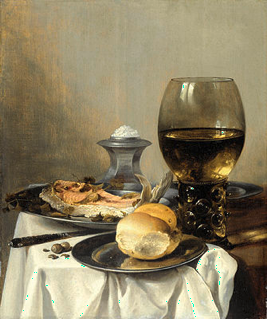
A still life (plural: still lifes) is a work of art depicting mostly inanimate subject matter, typically commonplace objects which are either natural (food, flowers, dead animals, plants, rocks, shells, etc.) or man-made (drinking glasses, books, vases, jewelry, coins, pipes, etc.).

One advantage of the still life genre of art is that it allows an artist much freedom to experiment with the arrangement of elements within a composition of a painting or drawing.
History of Still Life
With origins in Ancient Greco-Roman art and the Middle Ages, still life painting emerged as a distinct genre and professional specialization in Western painting by the late 16th century, and has remained significant since then.
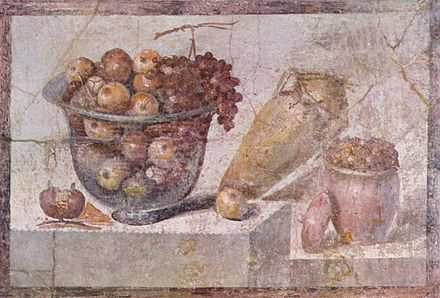
Roman fresco (wall) painting (Pompeii), 70 AD
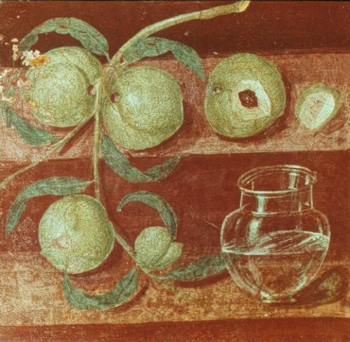
Still-life paintings often adorn the interior of ancient Roman rooms. These were meant as decorative images similar to the paintings we place on the walls of our homes today. However, they may have more to do with the quality of life enjoyed by the upper-class of Roman society and an expression of that affluence.
Still Life Vanitas
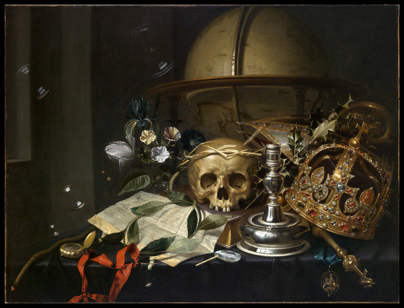
Also starting in Roman times is the tradition of the use of the skull in paintings as a symbol of mortality and earthly remains, often with the accompanying phrase Omnia morsaequat (Death makes all equal). These vanitas images have been re-interpreted through the last 400 years of art history, starting with Dutch painters around 1600.
Still Life in Ancient Egypt

Still-life paintings are also seen in the interior of ancient Egyptian tombs. It was believed that food objects and other items painted there would in the afterlife become real and available for use by the deceased. By the 16th century, food and flowers would again appear as symbols of the seasons and of the five senses.
Middle Ages and the Renaissance
By 1300, starting with Giotto and his pupils, still life painting was revived in the form of fictional niches on religious wall paintings which depicted everyday objects. Through the Middle Ages and the Renaissance, still life in Western art remained primarily an adjunct to Christian religious subjects, and conveyed religious and allegorical meaning. This was particularly true in the work of Northern European artists, whose fascination with highly detailed optical realism and symbolism led them to lavish great attention on the overall message in their paintings. Painters like Jan van Eyck often used still-life elements as part of an iconographic program.
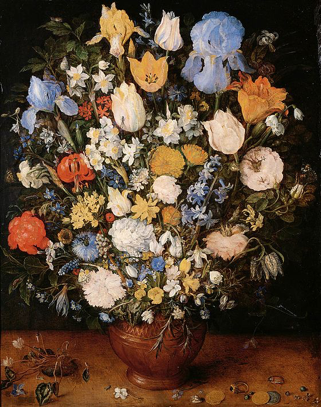
Still life, as a particular genre, began with Netherlandish painting in the 16th and 17th centuries, and the English term still life derives from the Dutch word stilleven.
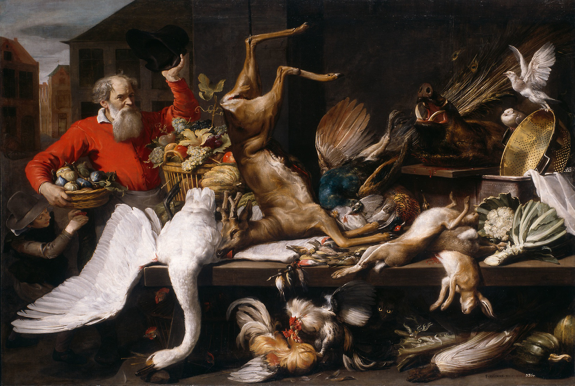
Early still-life paintings, particularly before 1700, often contained religious and allegorical symbolism relating to the objects depicted.

Later still-life works are produced with a variety of media and technology, such as found objects, photography, computer graphics, as well as video and sound.
Still life occupied the lowest rung of the hierarchy of fine art genres, but has been extremely popular with buyers in part because they are easily displayed on the walls within a home. In the hierarchy of painting subjects, history painting is considered high, followed by landscapes and portraiture.
Female artists before 1900, were usually relegated to painting still lifes and portraits.


The trompe-l’oeil painting, which intends to deceive the viewer into thinking the scene is real, is a specialized type of still life, usually showing inanimate and relatively flat objects at their actual size (life size).
Late Gothic Still Life

The development of oil painting technique by Jan van Eyck and other Northern European artists made it possible to paint everyday objects in a hyper-realistic fashion, owing to the slow drying, mixing, and layering qualities of oil colors.

Among the first to break free of religious meaning were Leonardo da Vinci, who created watercolor studies of fruit (around 1495) as part of his restless examination of nature, and Albrecht Dürer who also made precise colored drawings of flora and fauna.
Albrecht Dürer Watercolors

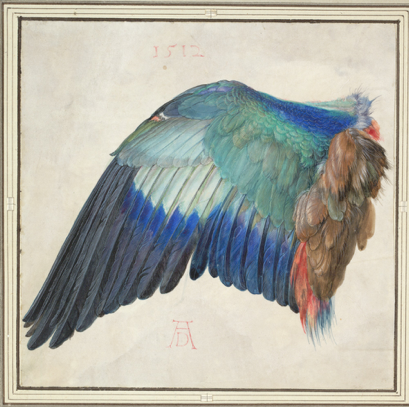
 These watercolor studies are removed from religious context and are simply close observation and recording the beauty and wonder of nature.
These watercolor studies are removed from religious context and are simply close observation and recording the beauty and wonder of nature.
Caravaggio (1600s Italian)

Spanish Painters Influenced by Caravaggio

At the turn of the century,the Spanish painter Juan Sánchez Cotán pioneered the Spanish still life with austerely tranquil paintings of vegetables, before entering a monastery in his forties in 1603, after which he painted religious subjects.
Still Life as a Fine Art Genre
Prominent Academicians of the early 17th century, such as Andrea Sacchi,felt that genre and still life painting did not carry the "gravitas" merited for painting to be considered great. An influential formulation of 1667 by André Félibien, a historiographer, architect, and theoretician of French classicism became the classic statement of the theory of the hierarchy of genres for the 18th century:
He who produces perfect landscapes is above another who only produces fruit, flowers or seafood. He who paints living animals is more estimable than those who only represent dead things without movement, and as man is the most perfect work of God on the earth, it is also certain that he who becomes an imitator of God in representing human figures, is much more excellent than all the others ...”
Still Life in the Dutch Region

Around 1600, flower paintings in oils became something of a craze; Karel van Mander painted some works himself and records that other Northern Mannerist artists such as Cornelis van Haarlem also did so. No surviving flower-pieces by them are known, but many survive by the leading specialists, Jan Brueghel the Elder and Ambrosius Bosschaert, both active in the southern Netherlands.
Still Life in France in the 1700s

The 18th century to a large extent continued to refine 17th-century formula and levels of still life artistic output decreased. In the Rococo style, floral decoration became far more common on porcelain, wallpaper, fabrics, and carved wood furnishings so that buyers preferred their paintings to have figures for visual contrast. Chardin (see below) was a leading proponent of still life genre and celebrated every day life of the French people. This was in stark contrast to the erotic paintings by French court painters like Françoise Boucher.

Jean Baptiste Simeon Chardin
Still Life in Spain in the late 1700s, Early 1800s

Francisco Goya
France in the 1800s

Camille Carot
With the rise of the European Academies, most notably the Académie française which held a central role in Academic art, still life began to fall from favor. The Academies taught the doctrine of the "Hierarchy of genres" (or "Hierarchy of Subject Matter"), which held that a painting's artistic merit was based primarily on its subject. In the Academic system, the highest form of painting consisted of images of historical, Biblical, or mythological significance, with still-life subjects relegated to the very lowest order of artistic recognition. Instead of using still life to glorify nature, some artists, such as John Constable and Camille Corot, chose landscapes to serve that end.
The Rise of Still Life in the Late 1800s
However, it was not until the final decline of the Academic hierarchy in Europe, and the rise of the Impressionist and Post-Impressionist painters, that technique and color harmony triumphed over subject matter, and still life was once again avidly practiced by artists.
This painting below is by French Realist/Impressionist painter Edouard Manet.

Impression & Post-Impressionism

Mary Cassatt

Paul Gaugin

Paul Cezanne
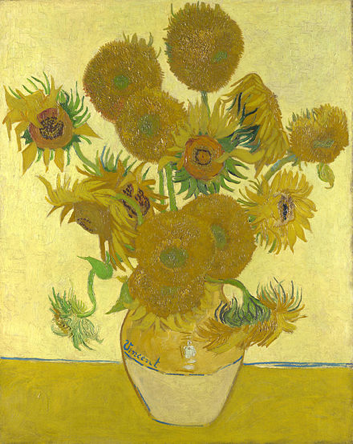
Vincent Van Gogh
Vincent van Gogh's "Sunflowers" paintings are some of the best-known 19th-century still life paintings. Van Gogh uses mostly tones of yellow and rather flat rendering to make a memorable contribution to still life history.
Still Life in Modern Art



Hidden Gems - Female Artists of the 20th Century
Without a patron, art dealer, or connection to a male figure, such as a prominent husband or artist, many female artists of the 20th century and beyond have significant artwork unknown to the academic world. Hopefully as these artists are discovered their work will be added to the canon of art history. One such artists is Alleen (Chic) Leonard.
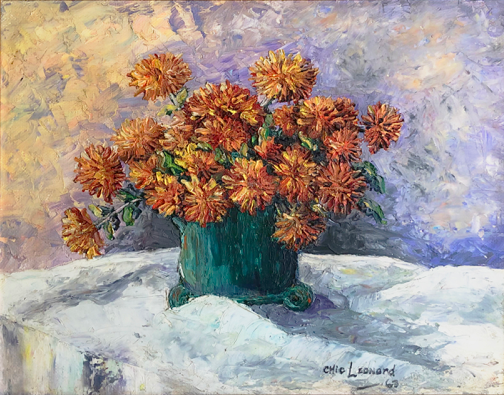

Alleen (Chic) Leonard
Still Life Drawing Assignment


Choose three to five objects and group them together creating a balanced composition. Once you are satisfied with your grouping, use the viewfinder to assist you with the compositional framing around the grouping.
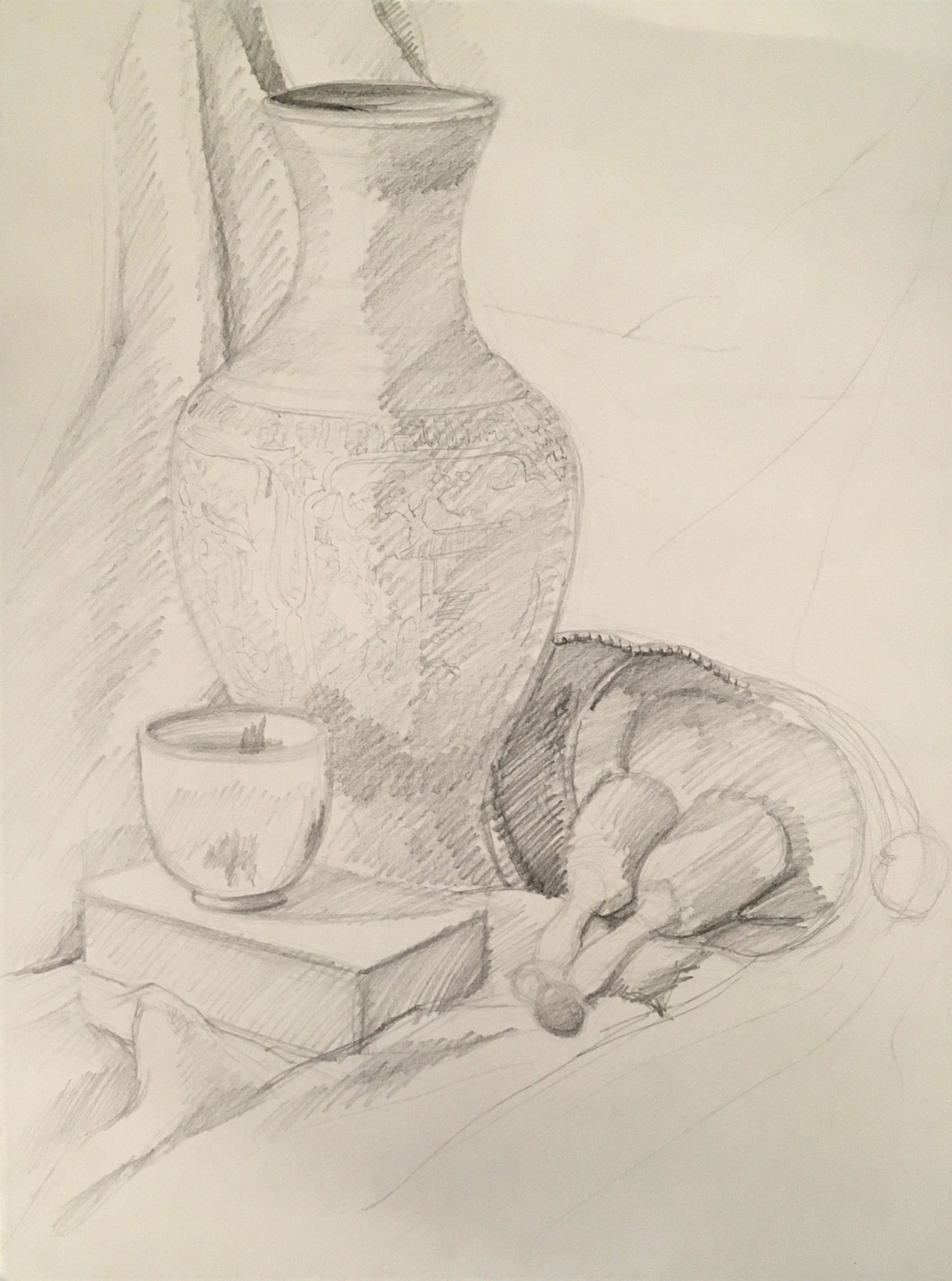
This still life demonstration has some of the elements that make the drawing aesthetic. There are directional forces through the use of diagonals, several objects at differing elevations, asymmetrical balance, contrast, overlapping forms, strong lighting, and vigorous mark-making. The detailed pattern on the large vase can be drawn before or after adding the shading to the vase. If you add the shading after drawing the pattern, you can come back in and reinforce the pattern if needed. This is about a 30-minute drawing demonstration using pencil, no eraser, on 18" x 24" drawing paper.
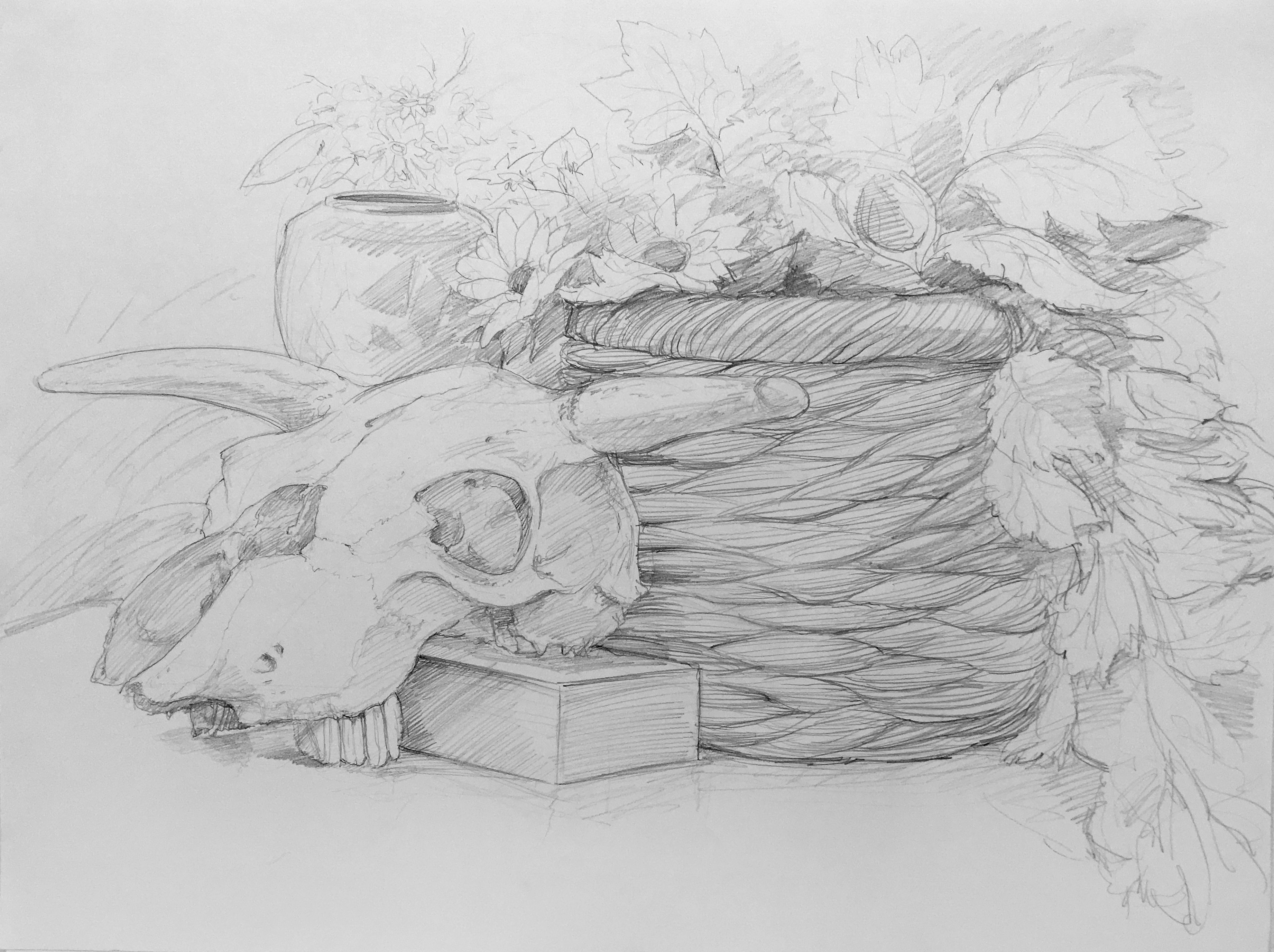
Another still life demonstration showing overlapping forms with both organic and manmade objects. Lighting is more diffuse and is coming from above and slightly from the left. Again, the drawing is first mapped out and adjusted during the drawing process adding details and values as the drawing progresses. No erasing allows the gradual buildup of the drawing.
